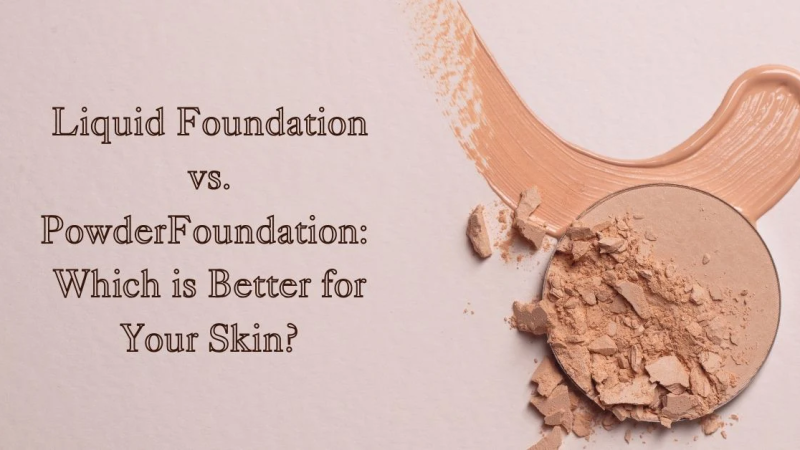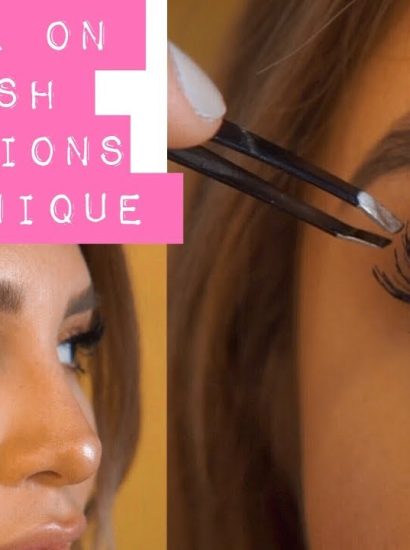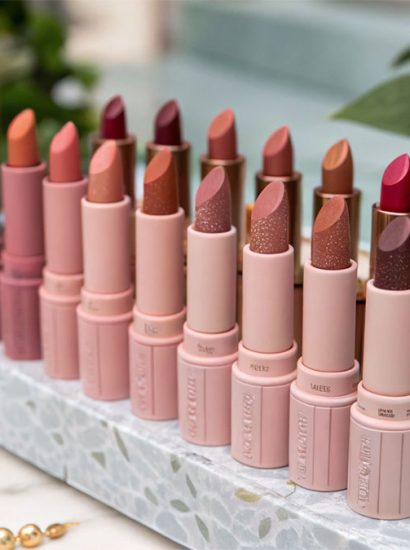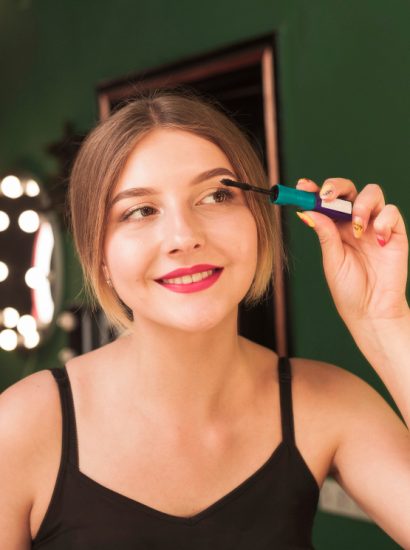When it comes to creating a flawless complexion, one of the most common beauty debates is powder foundation versus liquid foundation. Both are staples in the world of makeup, but they serve different purposes and perform uniquely depending on your skin type.
Powder foundation has long been the go-to for those who prefer a lightweight, matte look. Meanwhile, liquid foundation is loved for its smooth texture, dewy finish, and full-coverage power. The question isn’t which one is better overall — it’s which one works best for your skin.
Let’s dive deep into the pros, cons, and differences between these two foundation types so you can make an informed choice.
Understanding Powder Foundation
Powder foundation is made from finely milled minerals and pigments that help control oil and provide a soft-focus finish. It typically comes in two forms: pressed powder (in a compact) or loose powder (in a jar).
This foundation type is especially popular among people with oily or combination skin because it absorbs excess oil and keeps shine at bay throughout the day. It feels light on the skin, making it perfect for hot weather or those who dislike heavy makeup.
Modern powder foundations often include nourishing ingredients like hyaluronic acid, zinc oxide, and antioxidants. These new formulations are designed to be less drying while maintaining their signature matte finish.
Understanding Liquid Foundation
Liquid foundation, on the other hand, offers a creamy, blendable texture that provides a natural, radiant look. It’s available in countless finishes — matte, satin, dewy, luminous — and coverage levels, from sheer to full.
What makes liquid foundation so versatile is its ability to work well on nearly every skin type. For dry or mature skin, it provides hydration and smoothness. For normal skin, it gives a healthy glow. Even those with oily skin can benefit from oil-free or mattifying liquid formulas.
Many liquid foundations in 2025 now include skin-loving ingredients like niacinamide, hyaluronic acid, and SPF protection, making them both makeup and skincare in one.
Powder Foundation Versus Liquid Foundation: Coverage Comparison
One of the biggest differences between powder foundation versus liquid foundation lies in the coverage.
Powder foundation usually offers light to medium coverage, ideal for everyday wear when you want your skin to breathe. It’s perfect for quick touch-ups or creating a natural, “no-makeup” makeup look.
Liquid foundation, on the other hand, provides medium to full coverage. It’s the best choice if you want to conceal blemishes, redness, pigmentation, or uneven tone. Most formulas are buildable, so you can achieve both subtle and glamorous finishes depending on how you apply them.
If you want something minimal and easy, go for powder. If you want long-lasting, flawless coverage for special occasions, liquid foundation is your best bet.
Finish and Texture: Matte vs. Dewy
Another crucial factor in deciding between powder foundation versus liquid foundation is the finish and texture.
Powder foundation gives a matte finish, ideal for controlling oil and shine. It smooths out the skin’s surface, reduces the appearance of pores, and creates a photo-ready effect. This makes it a popular choice among people with oily or acne-prone skin.
Liquid foundation, in contrast, delivers a satin or dewy finish. It gives the skin a natural radiance and is often preferred by people with dry or dull complexions. This luminous effect can make the skin look fresh and hydrated, especially in colder seasons.
In simple terms: matte powders work best for hot, humid environments, while dewy liquids are perfect for cooler or dry conditions.
Application Techniques: Powder vs. Liquid
How you apply your foundation can change your entire makeup look.
For powder foundation, it’s best to use a fluffy brush or kabuki brush. Swirl the brush into the compact or loose powder, tap off the excess, and buff it into your skin using circular motions. Build up coverage gradually. This ensures a smooth, even finish without cakiness.
For liquid foundation, tools like makeup sponges or foundation brushes work best. Start from the center of your face and blend outward. Use a damp sponge for a natural, airbrushed effect or a dense brush for full coverage. Always blend into your jawline and neck for a seamless finish.
Remember: setting your liquid foundation with a light dusting of translucent powder can help lock it in and extend its wear time.
Skin Type: Which Foundation Works Best for You?
Your skin type is the most important factor when choosing between powder foundation versus liquid foundation.
If you have oily skin, powder foundation is your ally. It absorbs excess oil, keeps your skin matte, and prevents your makeup from sliding off during the day. The powder texture helps minimize the appearance of pores and prevents clogging.
If your skin is dry, opt for liquid foundation. Its hydrating formula smooths over dry patches, leaving your skin soft and radiant. Many modern liquid foundations contain moisturizing agents to combat flakiness.
Those with combination skin can use both — powder on the T-zone to control shine and liquid on the cheeks for added moisture.
For sensitive or acne-prone skin, mineral powder foundations are excellent because they contain fewer irritants. Meanwhile, mature skin tends to benefit from liquid foundations, which add moisture and don’t settle into fine lines.
Longevity and Wearability
When it comes to how long your foundation lasts, both have their pros and cons.
Powder foundation excels in oil control and is less likely to melt off in heat or humidity. However, it might fade quicker on dry skin or settle into lines if you don’t prep your skin properly.
Liquid foundation generally offers longer wear time and adheres better to the skin, especially when paired with primer and setting spray. Many 2025 formulas are sweat-resistant and designed for up to 24-hour wear — perfect for busy days or special events.
If you live in a humid climate or have oily skin, powder foundation will likely stay fresher longer. But if you need something long-lasting with more coverage, liquid foundation will perform better.
Common Mistakes to Avoid
Choosing between powder foundation versus liquid foundation can be tricky.
Here are a few common mistakes to avoid:
- Using the wrong formula for your skin type: Powder on dry skin can accentuate flakiness, while heavy liquid formulas can make oily skin look greasy.
- Skipping primer: Primer helps both powder and liquid foundations last longer and look smoother.
- Overapplying product: More isn’t always better — excessive layers can make your skin look cakey.
- Not blending properly: Uneven blending can create harsh lines, especially along the jaw or hairline.
- Ignoring your undertone: Always choose shades that match your undertone (cool, warm, or neutral) for a natural finish.
Avoiding these mistakes ensures your foundation enhances — not hides — your natural skin texture.
Hybrid and Modern Foundations: The Best of Both Worlds
Thanks to advances in beauty technology, the line between powder foundation versus liquid foundation is blurring. New hybrid foundations combine the lightness of powder with the hydration of liquid formulas.
Products like powder-to-cream or serum foundations provide the best of both worlds — buildable coverage, long wear, and skincare benefits. These innovative formulas adapt to your skin’s needs, making them perfect for people whose skin changes with the seasons.
If you can’t decide between powder or liquid, a hybrid foundation may be your ideal solution. It provides the flexibility and comfort your skin deserves.
Conclusion
In the end, when comparing powder foundation versus liquid foundation, there’s no single “best” option — only what’s best for you.
If you prefer a matte, lightweight finish and have oily or combination skin, powder foundation is your best match. It keeps shine under control and feels breathable.
If you love a dewy, hydrated glow and have dry or mature skin, liquid foundation will give you that luminous, youthful look.
Many beauty enthusiasts even use both: liquid foundation for coverage and powder to set it. Ultimately, experiment with formulas and finishes until you find the one that enhances your unique beauty and makes your skin look its best.
FAQs
1. Can I use powder foundation on top of liquid foundation?
Yes! Applying powder foundation lightly over liquid helps set the makeup and adds extra coverage. Just don’t overdo it to avoid a cakey finish.
2. Which foundation is better for everyday wear?
Powder foundation is ideal for quick, lightweight daily looks. Liquid foundation works better for events or when you want fuller coverage.
3. Does powder foundation clog pores?
Most modern powder foundations are non-comedogenic, especially mineral ones. Always remove your makeup properly to prevent buildup.
4. Can I use liquid foundation if I have oily skin?
Yes, but choose an oil-free or matte formula and set it with powder to reduce shine.
5. Which foundation lasts longer throughout the day?
Liquid foundation typically lasts longer, especially when applied with a primer and finished with a setting spray.
Also read: 10 Things to Know: Will Perfume Expire? Signs, Shelf Life, and How to Make It Last Longer





